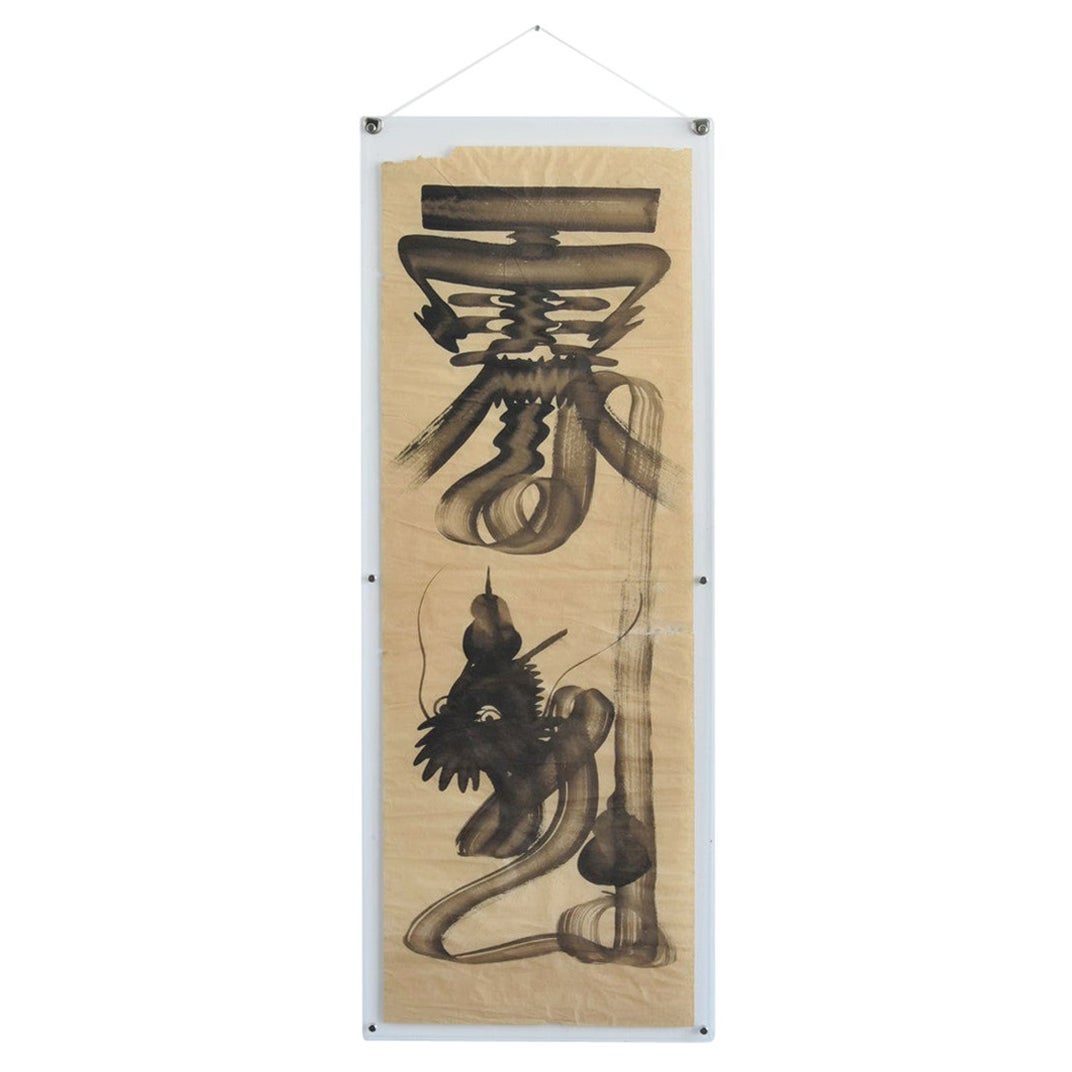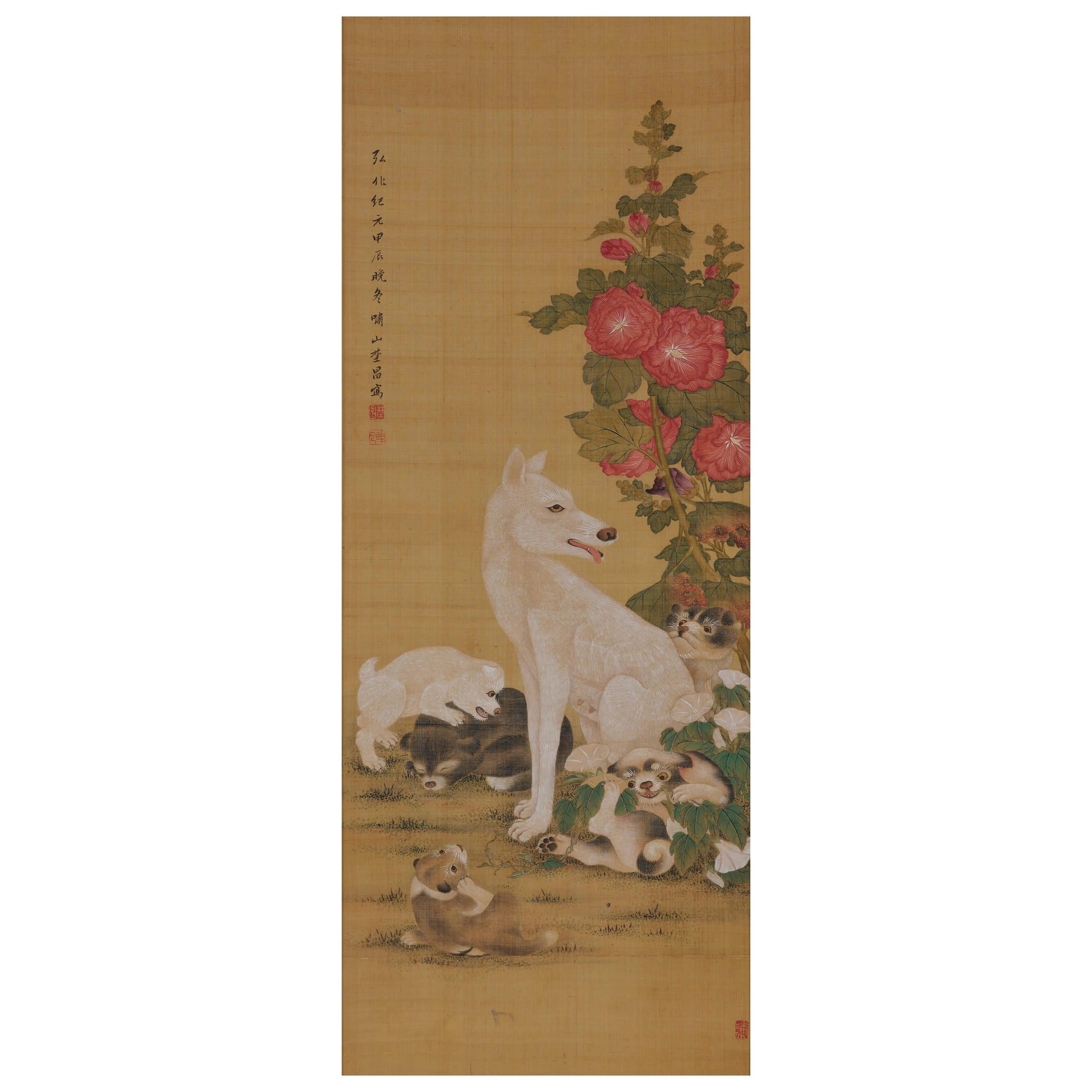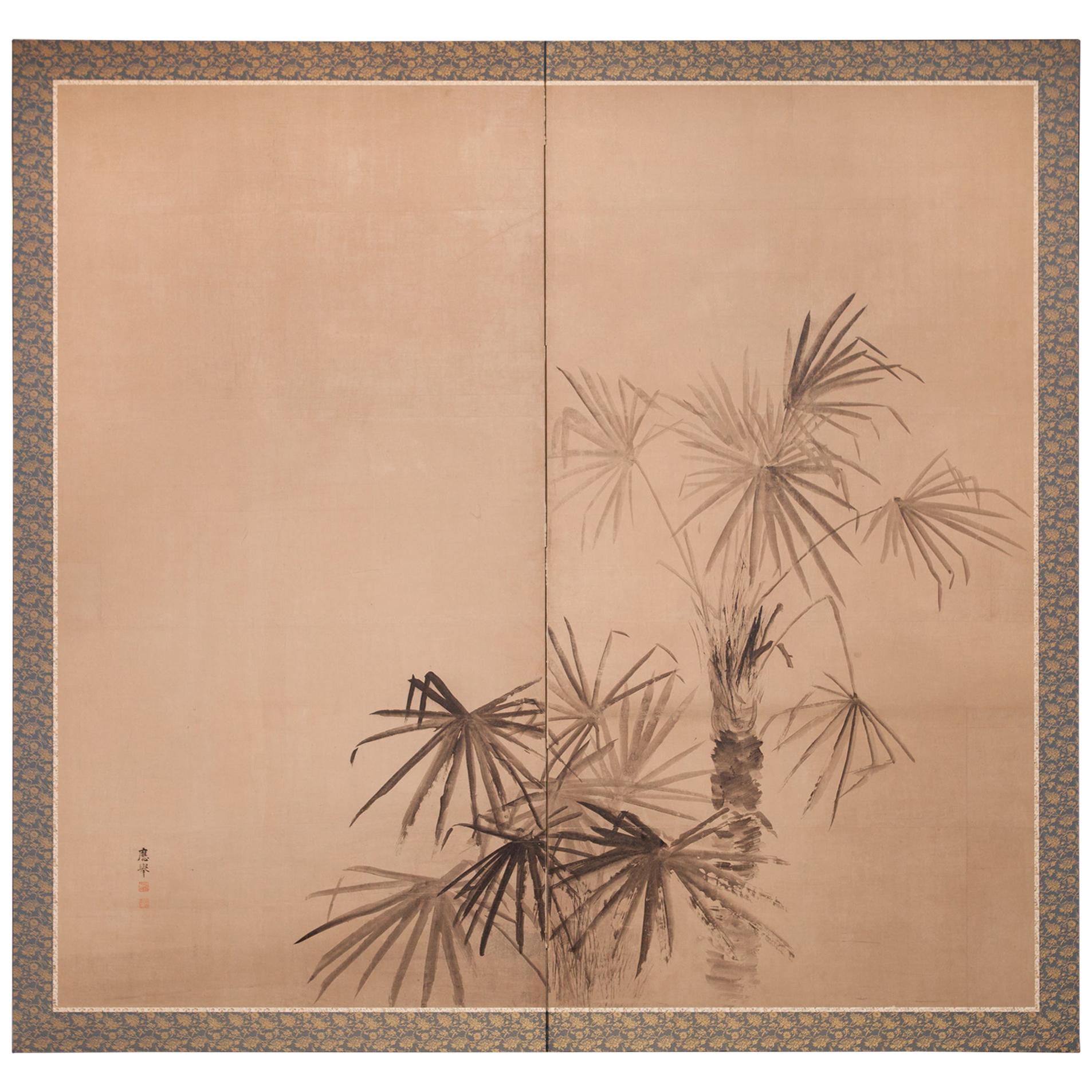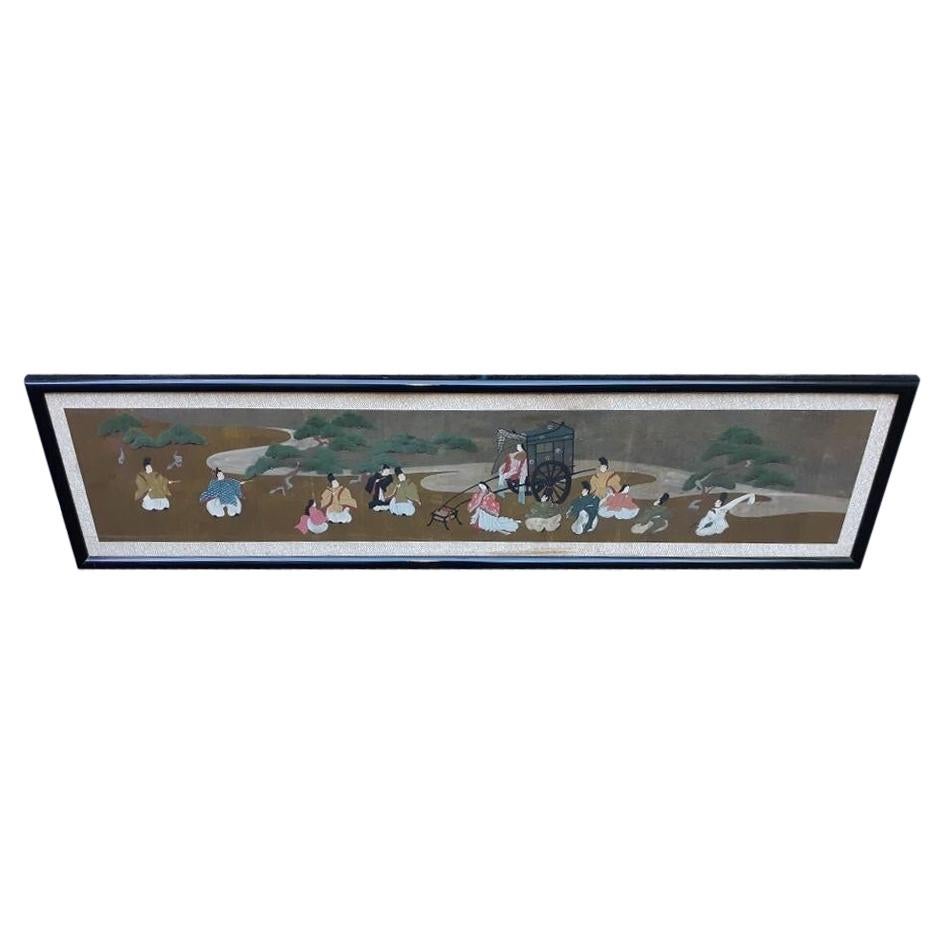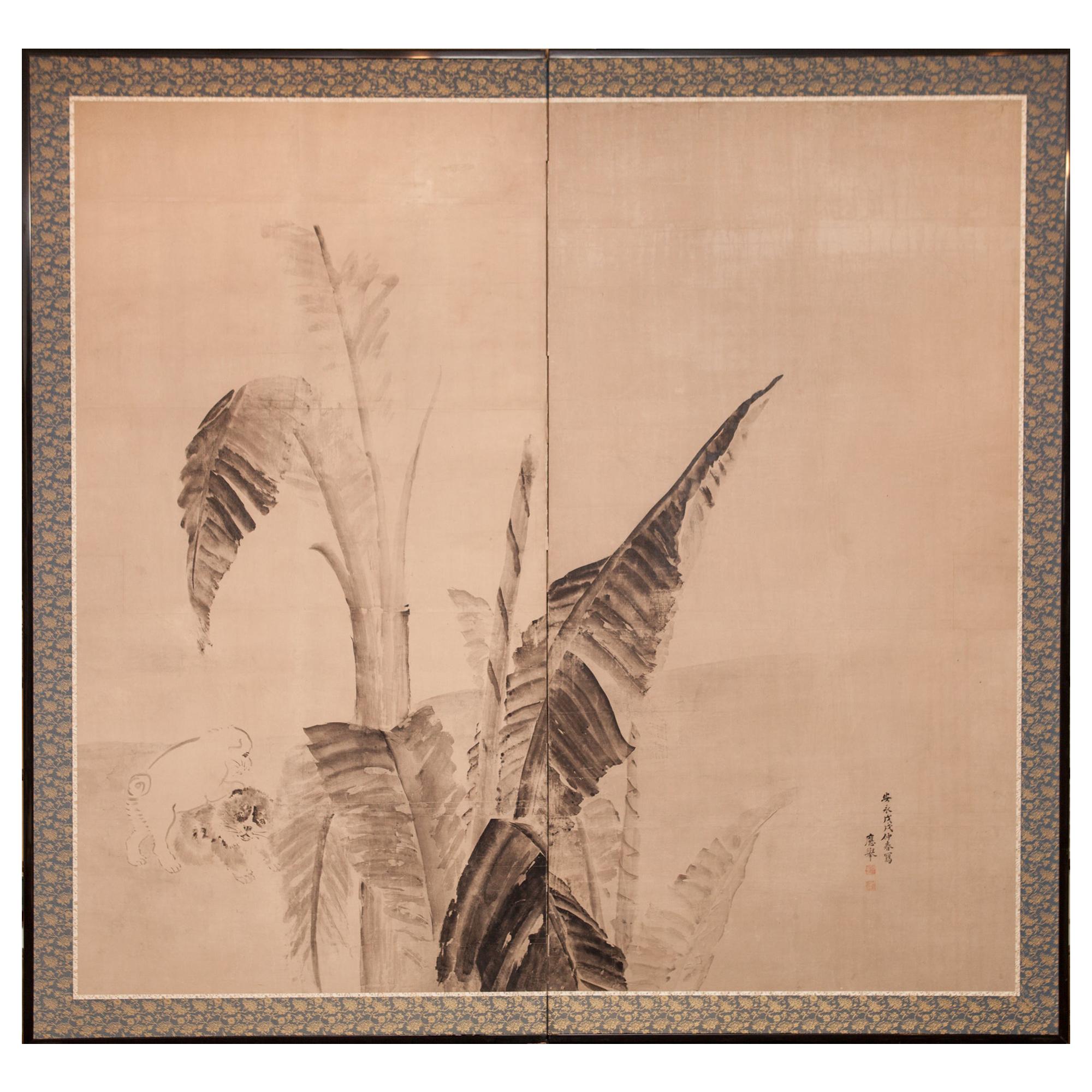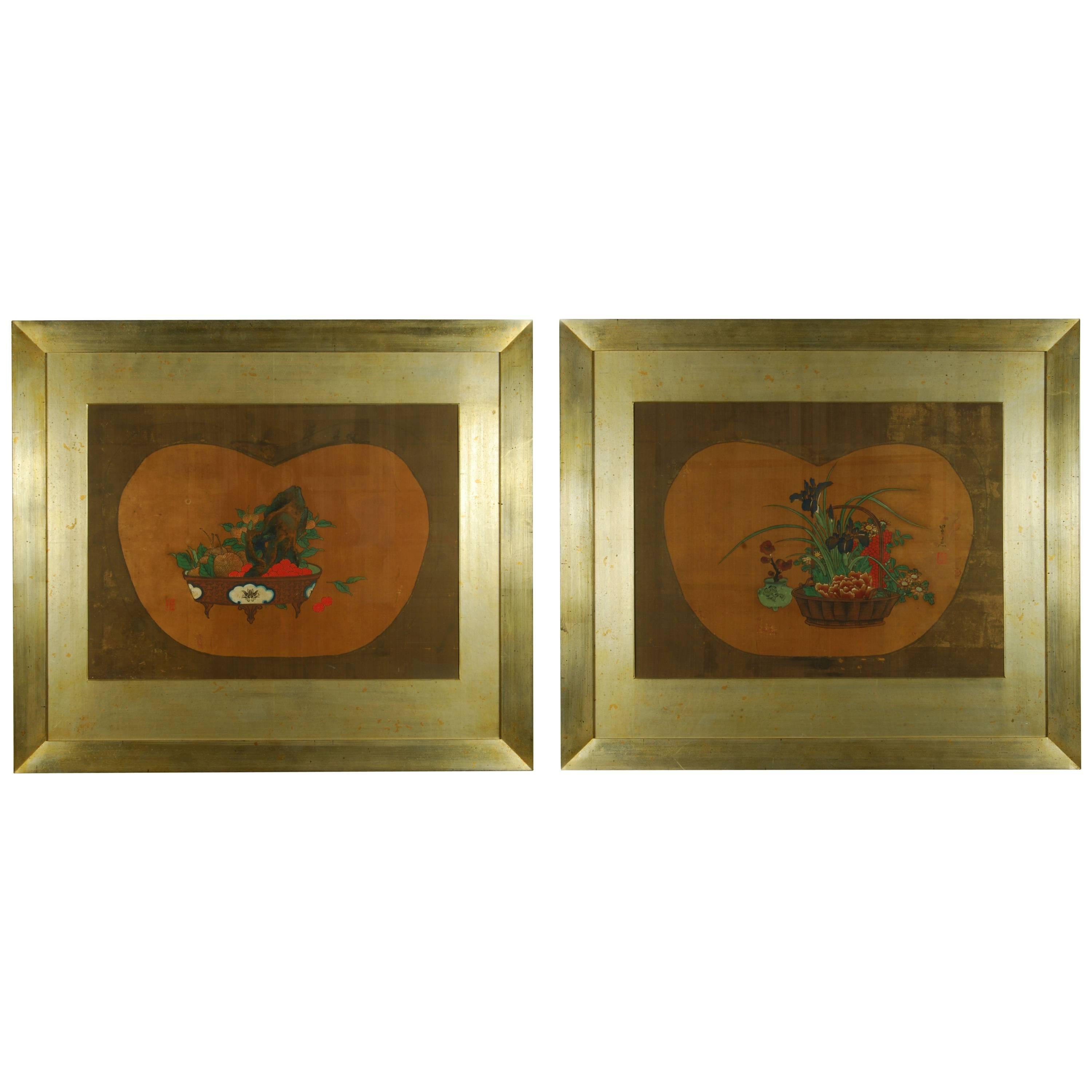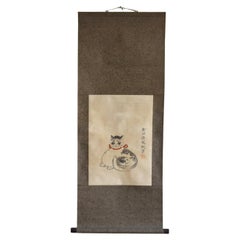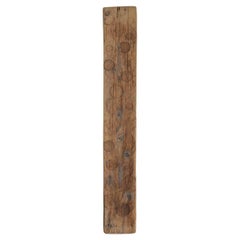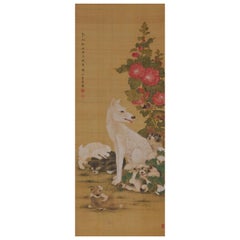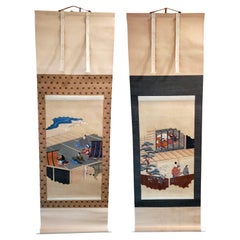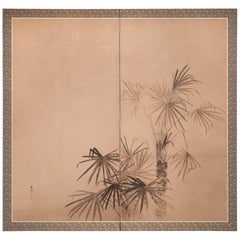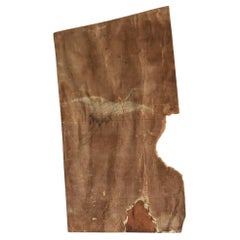
Japanese Antique Paintings on Old Wooden Boards / Wall Paintings / Wabi-Sabi Art
View Similar Items
Want more images or videos?
Request additional images or videos from the seller
1 of 19
Japanese Antique Paintings on Old Wooden Boards / Wall Paintings / Wabi-Sabi Art
About the Item
- Dimensions:Height: 37.41 in (95 cm)Width: 19.69 in (50 cm)Depth: 0.4 in (1 cm)
- Style:Edo (Of the Period)
- Materials and Techniques:
- Place of Origin:
- Period:
- Date of Manufacture:1800-1900
- Condition:
- Seller Location:Sammu-shi, JP
- Reference Number:1stDibs: LU5487225705812
About the Seller
5.0
Platinum Seller
These expertly vetted sellers are 1stDibs' most experienced sellers and are rated highest by our customers.
Established in 2015
1stDibs seller since 2020
1,105 sales on 1stDibs
Typical response time: 4 hours
More From This SellerView All
- Japanese Antique Ink Painting / 19th Century / Rare Chinese Character PaintingLocated in Sammu-shi, ChibaWe have a unique Japanese aesthetic sense. And only we can introduce unique items through our purchasing channels in Japan and the experience we have gained so far, in such a way that no one else can imitate. It is an ink painting written after the Meiji era. The biggest attraction of this work is that it uses Chinese characters to create paintings. To explain in detail, it is written here in Chinese characters as "un-ryu" . "Un" is a cloud and "ryu" is a dragon. These are embodied and drawn by comparing them to the meaning of Chinese characters. And the clouds depict the clouds hanging over the mountain, and the dragon depicts the climbing toward the mountain. Humorous paintings...Category
Antique Late 19th Century Japanese Edo Paintings
MaterialsAcrylic, Paper
- Antique hanging scroll of Japanese cat/Late Edo-Meiji period/Cat paintingLocated in Sammu-shi, ChibaThis is a picture of a cat drawn by a person named "Toshizumi Nitta" from the end of the Edo period to the beginning of the Meiji period. She is a very simple and cute cat. He is a vassal of the Tokugawa Shogunate, born in Ota City, Gunma Prefecture (southern part of Gunma Prefecture). He was related to the Tokugawa family and lived in a large mansion in the Ota clan in Gunma prefecture. However, the Nitta family's territory was very small, and they were by no means a wealthy vassal. He seems to have lived quite poorly. So he painted cats and sold them to people. The Nitta family continued to draw pictures of this cat for four generations. "Nitta toshizumi" is equivalent to the fourth generation. During the Edo period, sericulture was thriving in the Kanto region. Cats were said to be the gods of silkworms, as they drive away mice, the natural enemies of silkworms. It was the Nitta family who drew such a cat on paper, pasted it in the silkworm chamber, and sold it as a mouse repellent. There were also other monks who painted pictures of cats, but the Nitta family in particular was related to the Tokugawa family, so people believed that paintings of cats had special powers. , a lot of paintings...Category
Antique Late 19th Century Japanese Edo Paintings
MaterialsPaper
- Antique Work Board Used by Japanese Craftsmen/1868-1920/Wabi-Sabi Wall PaintingLocated in Sammu-shi, ChibaIf you want something special, we recommend purchasing items selected by Brood. We sell carefully selected old Japanese items. I've seen tens of thousands of items so far. Based o...Category
Antique Late 19th Century Japanese Meiji Paintings
MaterialsCedar
- Japanese antique wooden bowl/Late 19th Century/Wabi-Sabi wall artLocated in Sammu-shi, ChibaI have received a very cool wooden Bowl. The wooden bowl was made in the Edo period. It's very dry. It must have been exposed to rain and wind for quite some time. It is thought to ...Category
Antique 19th Century Japanese Edo Abstract Sculptures
MaterialsWood
- Japanese Antique Wooden Mask 1800s-1860s / Mingei Wabi Sabi Sculpture Folk ArtLocated in Sammu-shi, ChibaThis is a very old Japanese wooden mask. In Japan, it is called "Kamado-gami". It was made during the Edo period (1800s to 1860s). It is hand-c...Category
Antique Late 19th Century Japanese Edo Sculptures and Carvings
MaterialsCedar
- Japanese antique wooden wall board/1868-1920/Wabi-Sabi art/Low tableLocated in Sammu-shi, ChibaI have received a wooden board with beautiful grain. This is a work board that was used by farmers from the Meiji period to the Taisho period in Japan. It is thought that people were...Category
Antique Late 19th Century Japanese Meiji Decorative Art
MaterialsCedar
You May Also Like
- 1844 - Chichi, Japanese Scroll Painting. Colour on SilkLocated in Kyoto, JPMother’s Breast (Chichi) 1844 Hanging scroll. Ink, pigments and gofun on silk. Inscription: Kouka era, dragon year, late winter, painted by Shozan Yashou Artist’ seals: ...Category
Antique 1840s Japanese Edo Paintings and Screens
MaterialsSilk
- Two Antique Japanese Hanging Scroll PaintingsLocated in Atlanta, GATwo Japanese scroll painting depicts scenes from the Tale of Genji (Genji-E), from Edo period. These painting were purchased from Odewara Shoten in the...Category
Antique Early 19th Century Japanese Japonisme Paintings and Screens
MaterialsBrocade, Paper
$4,800 / set - Japanese Two-Panel Screen Ink Painting of Palm Trees on PaperLocated in Hudson, NYJapanese two-panel screen: ink painting of Palm Trees on paper, Edo period (1787) beautiful painting of Japanese windmill palm trees. Ink paint...Category
Antique 18th Century Japanese Edo Paintings and Screens
MaterialsPaper, Silk, Wood
- Large Antique Horizontal Japanese PaintingLocated in Lambertville, NJAn antique horizontal Japanese Meiji period qouache watercolor painting with black lacquered frame under glass. 65.5 inches long, 17inches high. Th...Category
Antique 1880s Japanese Meiji Paintings and Screens
MaterialsGlass, Hardwood, Paper
- Six-Panel Japanese Screen on Spring Gold LeafLocated in Brescia, ITSpring landscape by an unknown painter of the Rinpa school, 19th century, six-panel ink painted on gold leaf on rice paper. The flowers are made with the "gofun" technique, natural or pigmented white oyster powder. Rinpa (? ?, Rinpa) is one of the major historical schools of Japanese painting. the style was consolidated by the brothers Ogata Korin (1658–1716) and Ogata Kenzan...Category
Antique Late 19th Century Japanese Edo Paintings and Screens
MaterialsGold Leaf
- Japanese Two Panel Screen Ink Painting of Banana Leaves on Mulberry PaperLocated in Hudson, NYEdo period (dated 1787) beautiful painting of unfurling palm leaves with romping puppies in the background. Ink painting (sumi-e) on mulberry paper. Signature reads: Okyo. Calligraph...Category
Antique Late 18th Century Japanese Edo Paintings and Screens
MaterialsPaper
Recently Viewed
View AllMore Ways To Browse
Antique Folding Screen Wood
Japanese Wooden Screens Antique
Edo Period Folding Screens
Crane Picture
Meiji Edo Screens
Meiji Folding Screens
Antique Edo Screens
Edo Period Antique Japanese Screens
Antique Wooden Folding Screen
Folding Screen With Cranes
Asian Wood Screen Panels
Chinese Panel Screen
Chinese Screen Panel
China Panel Screen
Japanese Wood Screen
Chinese Wood Screen
Silk Panel Screen
Japanese Two Panel
